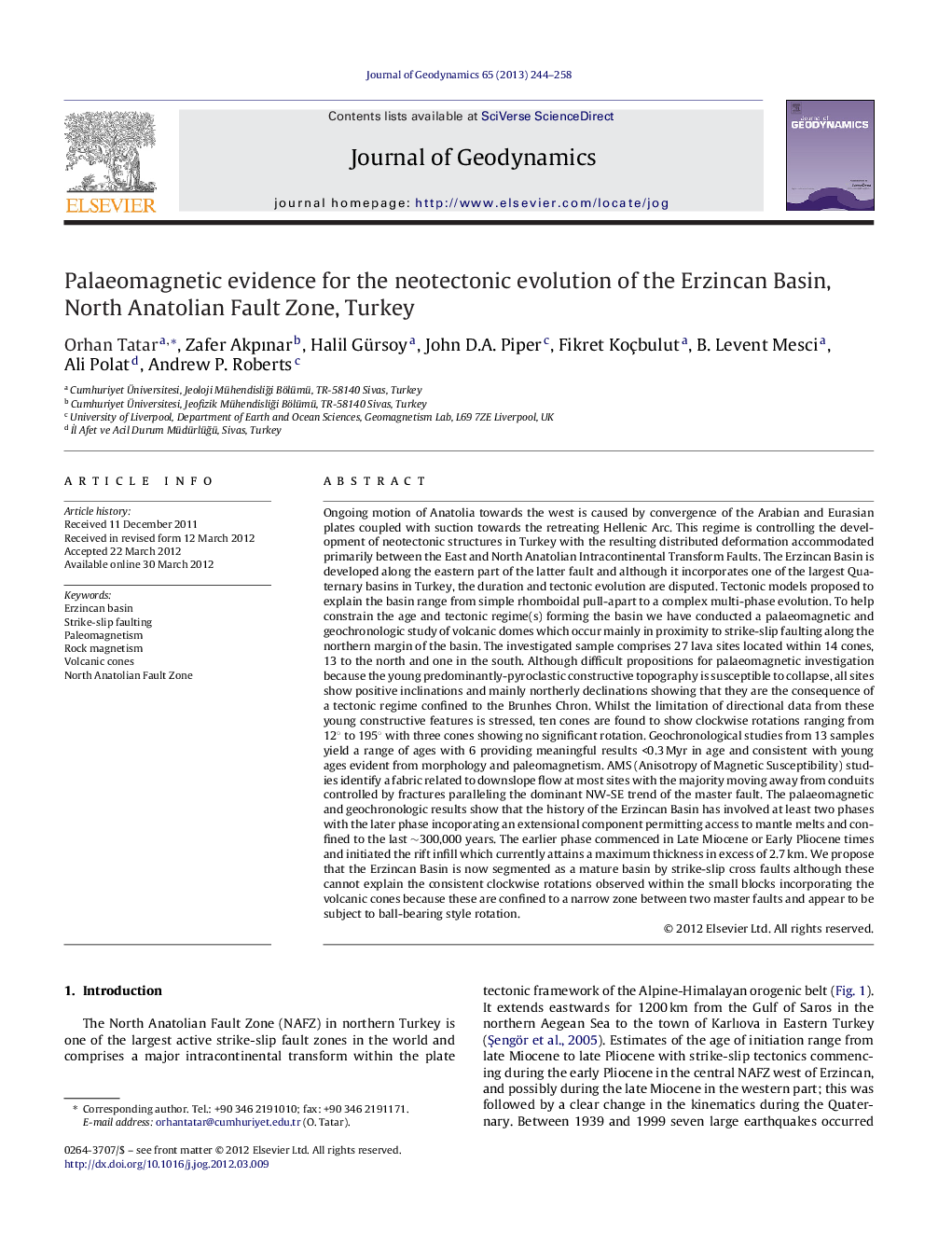| کد مقاله | کد نشریه | سال انتشار | مقاله انگلیسی | نسخه تمام متن |
|---|---|---|---|---|
| 4688257 | 1635784 | 2013 | 15 صفحه PDF | دانلود رایگان |
Ongoing motion of Anatolia towards the west is caused by convergence of the Arabian and Eurasian plates coupled with suction towards the retreating Hellenic Arc. This regime is controlling the development of neotectonic structures in Turkey with the resulting distributed deformation accommodated primarily between the East and North Anatolian Intracontinental Transform Faults. The Erzincan Basin is developed along the eastern part of the latter fault and although it incorporates one of the largest Quaternary basins in Turkey, the duration and tectonic evolution are disputed. Tectonic models proposed to explain the basin range from simple rhomboidal pull-apart to a complex multi-phase evolution. To help constrain the age and tectonic regime(s) forming the basin we have conducted a palaeomagnetic and geochronologic study of volcanic domes which occur mainly in proximity to strike-slip faulting along the northern margin of the basin. The investigated sample comprises 27 lava sites located within 14 cones, 13 to the north and one in the south. Although difficult propositions for palaeomagnetic investigation because the young predominantly-pyroclastic constructive topography is susceptible to collapse, all sites show positive inclinations and mainly northerly declinations showing that they are the consequence of a tectonic regime confined to the Brunhes Chron. Whilst the limitation of directional data from these young constructive features is stressed, ten cones are found to show clockwise rotations ranging from 12° to 195° with three cones showing no significant rotation. Geochronological studies from 13 samples yield a range of ages with 6 providing meaningful results <0.3 Myr in age and consistent with young ages evident from morphology and paleomagnetism. AMS (Anisotropy of Magnetic Susceptibility) studies identify a fabric related to downslope flow at most sites with the majority moving away from conduits controlled by fractures paralleling the dominant NW-SE trend of the master fault. The palaeomagnetic and geochronologic results show that the history of the Erzincan Basin has involved at least two phases with the later phase incoporating an extensional component permitting access to mantle melts and confined to the last ∼300,000 years. The earlier phase commenced in Late Miocene or Early Pliocene times and initiated the rift infill which currently attains a maximum thickness in excess of 2.7 km. We propose that the Erzincan Basin is now segmented as a mature basin by strike-slip cross faults although these cannot explain the consistent clockwise rotations observed within the small blocks incorporating the volcanic cones because these are confined to a narrow zone between two master faults and appear to be subject to ball-bearing style rotation.
Journal: Journal of Geodynamics - Volume 65, April 2013, Pages 244–258
